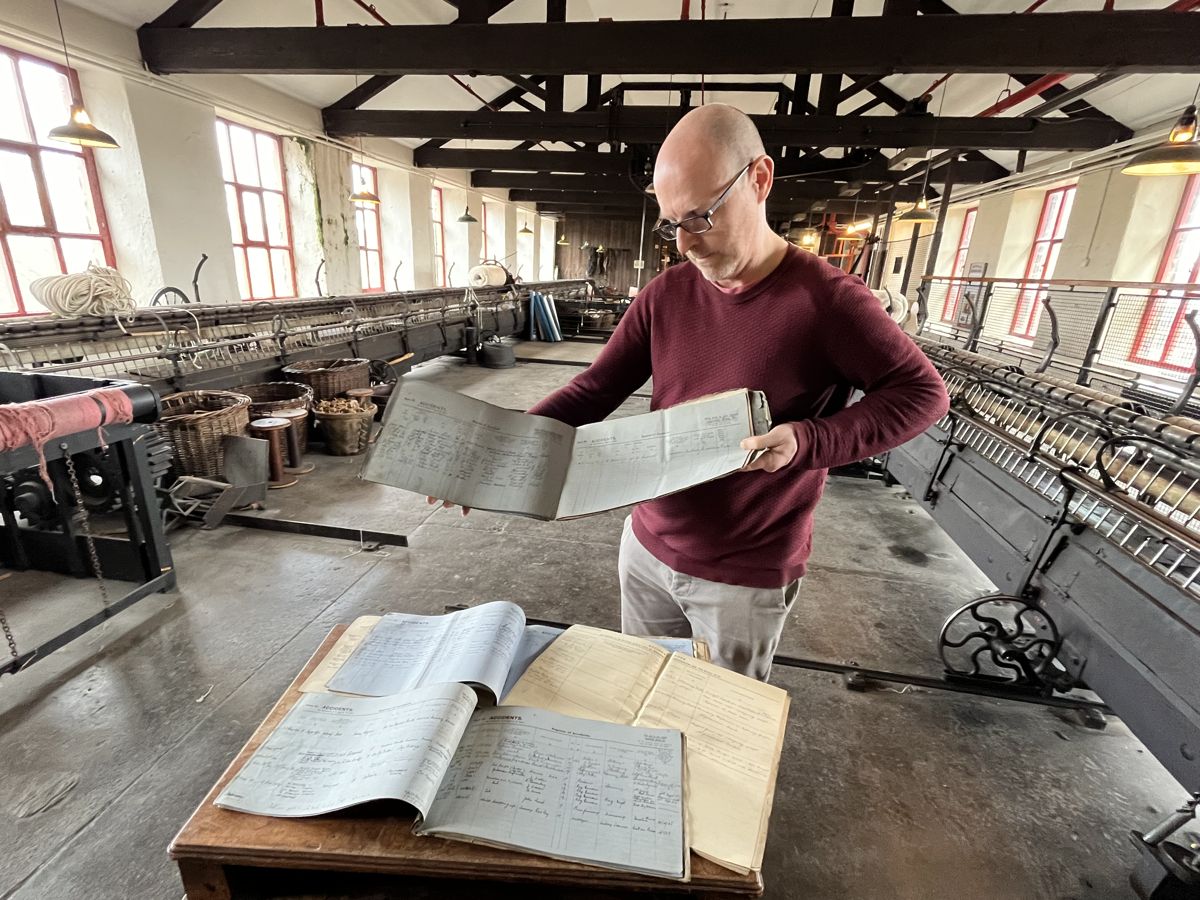A recently unearthed Edwardian accident book at Leeds Industrial Museum uncovers the grim realities faced by mill workers in the early 1900s, shedding light on severe injuries and fatalities in the textile industry. From crushed fatalities to severed fingers, the book vividly details the dangerous working conditions that defined Leeds’ industrial legacy.
What does the newly found Edwardian accident book reveal about Leeds’ textile industry?
The Edwardian accident book discovered at Leeds Industrial Museum uncovers the severe risks mill workers faced in the early 1900s, including severe injuries and fatalities. It documents the daily hazards, from severe lacerations to crushing deaths, revealing the industrial legacy and the perilous working conditions in Leeds’ textile trade.
Discovery of the Past
An extraordinary piece of history has surfaced from the depths of Leeds’ storied industrial legacy. Found within the confines of Leeds Industrial Museum, a once thriving textile behemoth, is an Edwardian accident book. It is a poignant reminder of the perilous conditions once faced by the city’s mill workers. Detailed within the worn pages are numerous incidents that speak volumes about the grueling reality for those in the textile industry in the early 20th century.
The records, meticulous in their detail, recount both minor and major incidents. They range from severed fingers to fatalities, exposing the daily dangers encountered by the workers. Among the grim tales is that of William Bell, a 44-year-old mill operative, who met his untimely demise in 1905. He was crushed by a milling machine during a move gone awry, alongside his colleague Albert Holdsworth, who sustained a leg injury. A newspaper clipping from the time recounts, “Suddenly, and without warning, the machine fell onto Bell and Holdsworth. Assistance was immediately at hand and the unfortunate men were extricated with difficulty.” Bell’s death was instantaneous, a tragic loss leaving a widow and children bereft.
The book does not shy away from the harsh truths of the era, documenting not only Bell’s tragedy but also the fatal accident of W. Hinchcliffe, a 40-year-old engineer. In 1909, while performing maintenance on a boiler, Hinchcliffe was killed, adding to the list of lives claimed by the demanding work at the mill.
Daily Hazards in the Mill
The perilous nature of mill work did not discriminate, as the accident book reveals further. It shows that both men and women, young and old, were subject to the mill’s treacherous environment. Doris Gatenby, a mere 18 years of age, was struck by a shuttle in 1922, an all-too-common incident in weaving departments. The shuttle caused a laceration near her temple, marking her amongst the countless who suffered injuries.
By 1935, the dangers persisted, as Edna Atkinson, a filler and minder, discovered when her fingers were mangled in the rollers of a carding engine. A mere two years later, William H. Waddington, a spinner, fractured his arm while tending to a loom’s leather belt. These incidents, just a few among many, illustrate the perils that loomed over the heads of those who powered Leeds’ textile industry.
Some workers were alarmingly young, with the documents listing employees aged under 16 and under 18, highlighting the widespread disregard for youth labor laws at the time. The book is not only a record of accidents but also a directory of the youthful hands that toiled amidst the looms and spinning jennies.
Legacy and Reflection
Armley Mills, the site of these industrial tales, boasts a lineage dating back to the 1600s. It ascended to prominence under Colonel Thomas Lloyd, who, in the late 1700s, transformed it into the world’s largest mill of its kind. Although the last thread was spun in 1969, the mill’s spirit endures through Leeds Industrial Museum, which began welcoming the public in 1982.
The museum now safeguards artifacts from the textile era, including vintage machinery and traditional looms. These relics serve as a testament to the city’s industrious past. John McGoldrick, curator of industrial history at Leeds Museums and Galleries, expressed the significance of the find: “We know that the museum was a bustling, hugely productive center for the manufacture of textiles, employing hundreds from the local area. But until now, we haven’t known a great deal about the individuals who worked here, so finding these documents is a treasure trove of information.”
Leeds’ historical narrative is deeply intertwined with the textile trade, a sentiment echoed by Councillor Jonathan Pryor, deputy leader and executive member for economy, culture, and education. Pryor remarked, “The textile industry played a huge role in establishing Leeds as an economic powerhouse and is part of the fabric of the city and its heritage.” This discovery enriches our understanding of the industry’s role in shaping the city and the lives of its residents.
For those intrigued by the legacy of Leeds’ textile industry and the people who fueled its success, a visit to the Leeds Industrial Museum is a must. To explore further or plan a visit, information is available at the Leeds Industrial Museum website.
ENDS
- The recently discovered Edwardian accident book at Leeds Industrial Museum reveals the grim realities of severe injuries and fatalities faced by mill workers in the early 1900s.
- The book details incidents ranging from severed fingers to crushing deaths, shedding light on the dangerous working conditions in Leeds’ textile industry.
- The records in the accident book recount the tragic deaths of workers like William Bell, who was crushed by a milling machine in 1905, leaving behind a widow and children.
- The dangerous working conditions in the mill affected both men and women of all ages, with incidents like Doris Gatenby being struck by a shuttle and Edna Atkinson getting her fingers mangled in the rollers of a carding engine.
- The legacy of Leeds’ textile industry is preserved at the Leeds Industrial Museum, showcasing artifacts from the city’s industrious past and providing insight into the lives of mill workers.
